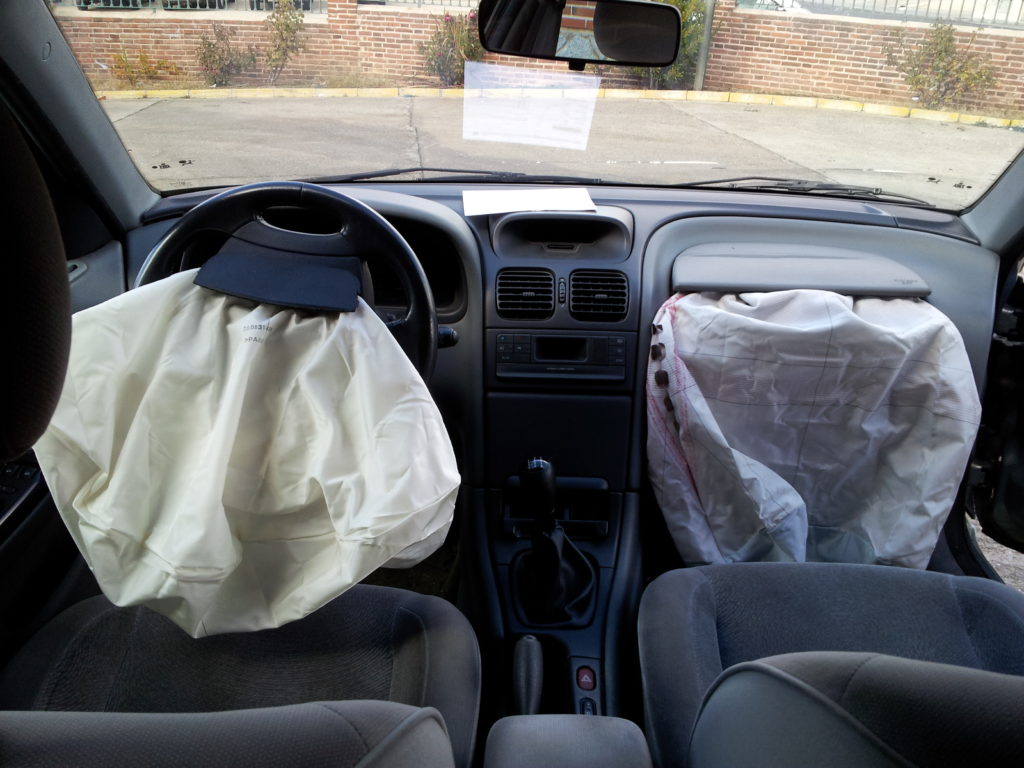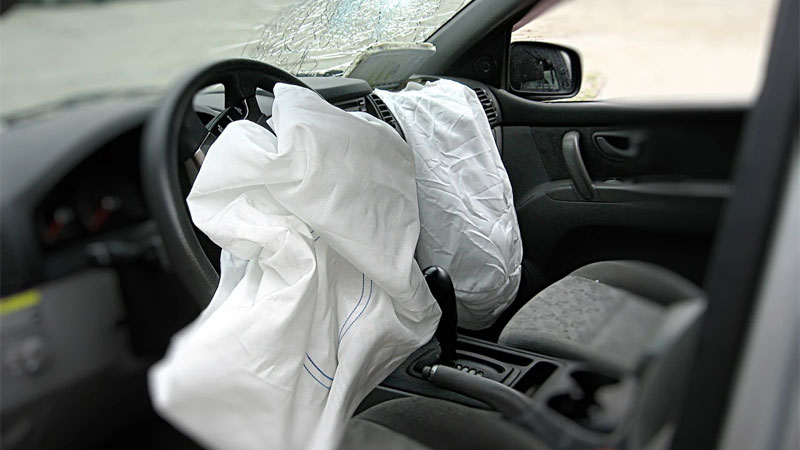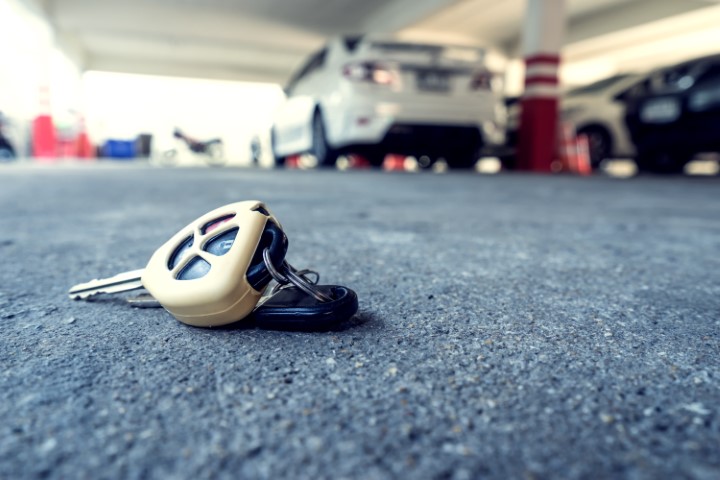Average Airbag Replacement Costs Provide an overview of the typical cost range for airbag replacement in the UK (£300 to £1,500).
The average cost of airbag replacement in the UK typically falls within a range of £300 to £1,500, but the actual cost can vary significantly depending on several factors.
Here is a concise overview of the typical cost range, along with the various factors that have the potential to influence the ultimate price.
Front Driver’s Airbag:
Replacement Cost: £200 to £600
Front Passenger’s Airbag:
Replacement Cost: £200 to £600
Side Airbags (per bag):
Replacement Cost: £200 to £500 per airbag
Curtain Airbags (per bag):
Replacement Cost: £200 to £500 per airbag
Labor Costs:
Labor costs can fluctuate, but you can anticipate paying roughly £50 to £100 per hour.
Diagnostic and Safety Checks:
Before replacing airbags, a diagnostic and safety check is typically performed. This can cost around £50 to £100.
Genuine vs. Aftermarket Parts:
Using genuine manufacturer parts will generally cost more than aftermarket parts. The price difference can be significant.
Single vs. Multiple Airbag

The cost difference between replacing a single airbag and multiple airbags in a vehicle can be significant due to the additional parts and labor required for multiple airbag replacement.
Here’s an explanation of the cost difference, along with some real-life examples:
Single Airbag Replacement:
When replacing a single airbag, the cost is generally lower because you’re only dealing with one airbag module and the associated components.
Labor costs for disassembling and reassembling the affected area are lower than for multiple airbags.
The cost of the airbag itself is a significant portion of the expense.
Real-life Example: Replacing one front airbag in a vehicle may cost between £300 and £600, influenced by factors such as location and your choice of OEM or aftermarket parts.
Another thing you need to know, to calculate a number before a percentage decrease, you need to determine the original amount before the reduction took place. This can be achieved by dividing the decreased value by 1−(percentage decrease/100)1 – \text{(percentage decrease/100)}1−(percentage decrease/100). For instance, if an item is now worth $80 after a 20% decrease, the original price can be calculated by dividing 80 by 0.8, resulting in $100. This formula helps reverse the decrease to find the initial amount.
Multiple Airbags Replacement:
Replacing multiple airbags, such as frontal, side-impact, or curtain airbags, can substantially increase the cost.
You’ll need to replace each airbag module, and this may involve more extensive disassembly and reassembly of the vehicle’s interior.
Labor costs are higher, as the technician needs to access and replace multiple airbag modules, which requires more time and effort.
The cost of each airbag module adds up, further contributing to the overall expense.
Real-life Example: Let’s say your vehicle was involved in an accident that deployed the frontal airbags, side-impact airbags, and curtain airbags. Replacing all these airbags, along with labor and parts, could cost between £1,000 to £2,000 or more, depending on various factors like vehicle type, location, and the choice between OEM or aftermarket parts.
Additionally, if your vehicle is covered by insurance, some or all of the replacement costs may be covered under your policy, depending on the circumstances.
OEM vs. Aftermarket Parts
Comparing the cost implications of using OEM (Original Equipment Manufacturer) parts versus aftermarket alternatives can help you make an informed choice based on your budget and quality considerations. Here’s a comparison of these options:
OEM Parts:
- Quality and Compatibility: OEM parts are manufactured by the same company that made the original components in your vehicle.
These parts are made to match your vehicle manufacturer’s exact specifications and quality standards, guaranteeing strong compatibility and reliability.
- Cost: OEM parts are typically more expensive than aftermarket alternatives. The higher cost is due to the quality and precision of these parts.
Aftermarket Parts:
- Cost: Aftermarket parts are generally more budget-friendly. Third-party manufacturers produce them and come in a wide range of prices, offering more cost flexibility.
- Variety: Aftermarket parts often come in a variety of options, allowing you to choose between different brands, qualities, and price points. This can be beneficial if you’re looking to balance budget and quality.
- Quality: Aftermarket parts’ quality varies; some can match or surpass OEM standards, while others may be less durable and reliable.
Guidance for Choosing:
- Consider Your Vehicle’s Age: For newer vehicles that are still under warranty, using OEM parts may be the safest choice to ensure that your vehicle remains in warranty compliance.
However, for older vehicles, especially those that are no longer under warranty, aftermarket parts can be a cost-effective option.
- Budget: If you’re on a tight budget and need to keep costs down, aftermarket parts can save you money. Just be cautious and do your research to select reputable brands and products that meet quality standards.
- Quality and Safety: When safety is a top priority, such as when dealing with components like airbags, brakes, or safety-critical systems, it’s often best to opt for OEM parts.
These parts are designed to meet rigorous safety standards and are more likely to provide the highest level of safety.
- Consult with a Professional: Consult with a trusted mechanic or auto repair shop. They can provide advice on whether aftermarket parts are suitable for your specific repair and can recommend reputable aftermarket brands if applicable.
- Research and Read Reviews: Before choosing aftermarket parts, research the specific part you need, read reviews, and look for recommendations from experts or other vehicle owners who have used those parts.
In summary, the choice between OEM and aftermarket parts should be based on your specific circumstances, including your budget, the age of your vehicle, and the nature of the repair.
Balancing cost and quality is essential, and consulting with a professional can help you make the right decision for your vehicle’s needs.
Labour and Diagnostic
Labor and diagnostic fees are additional costs associated with vehicle repairs and maintenance.
These fees cover the cost of labor for the work performed by mechanics, as well as the cost of diagnosing issues and identifying the necessary repairs. Here’s an explanation of these fees, along with estimated ranges in the UK:
Labor Fees:
Labor fees include the cost of the actual work done by mechanics or technicians on your vehicle.
These costs can change based on factors like how hard the repair is, where the shop is, and how skilled the mechanics are. Common labor fees include:
Hourly Labour Rates:
In the UK, hourly labor rates typically range from £50 to £100 or more, with higher rates often found in urban areas.
Flat-Rate Labour: Some repair shops use a flat-rate system, where each repair job has a predetermined number of hours assigned to it, regardless of how long it actually takes the mechanic.
The customer is charged based on this flat rate, which is often standardized within the industry.
Specialized Labour: For highly specialized or complex repairs, such as those involving the vehicle’s electronics or safety systems, labor fees may be higher due to the expertise and training required.
Diagnostic Fees:
Diagnostic fees cover the cost of identifying and diagnosing problems with your vehicle. Mechanics use various tools, equipment, and expertise to pinpoint issues.
These fees are often associated with time spent on diagnosis and the use of specialized diagnostic equipment. Typical diagnostic fees include:
Initial Diagnostic Fee: Many repair shops charge an initial diagnostic fee to assess the vehicle and determine the source of a problem. This fee may range from £50 to £150 or more, depending on the shop and the complexity of the issue.
Hourly Diagnostic Rates: In cases where complex diagnostics are required, such as troubleshooting electrical or computer-related problems, hourly diagnostic rates may apply, and these rates are often similar to regular labor rates.
No-Charge Diagnostics: Some repair shops offer free or no-charge diagnostics as a service to attract customers. However, keep in mind that these “free” services may be offset by higher repair costs or parts prices
Getting Quotes and Comparing Prices

Obtaining quotes from different repair shops and service providers is a smart way to ensure you get the best deal for your vehicle repair or maintenance needs.
Here’s some advice on how to get quotes and the importance of price comparison:
Identify Your Needs:
Before seeking quotes, be clear about what services or repairs your vehicle needs. Whether it’s routine maintenance, specific repairs, or part replacements, having a precise understanding of the work required will help you get accurate quotes.
Ask for Recommendations:
Seek recommendations from people you know and check online reviews and ratings for valuable insights when choosing a repair shop.
Contact Multiple Repair Shops:
Contact multiple local repair shops and service providers through calls, emails, or in-person visits. Have vehicle and work details ready when reaching out.
Request Detailed Quotes:
When contacting repair shops, ask for detailed written quotes. These quotes should include itemized costs, including labor, parts, taxes, and any additional fees. Ensure that the quotes are specific to your vehicle’s make and model.
Clarify Warranty Information:
Ask about warranties on the parts and labor. Some repair shops offer warranties on the work they perform and the parts they use. Understanding warranty terms can help you evaluate the overall value of the service.
Inquire About Payment Policies:
Discuss payment methods and policies. Some shops may require a deposit or full payment upfront, while others may offer payment plans. Make sure you understand their payment requirements and policies.
Compare Quotes:
Once you have obtained quotes from several repair shops, take the time to compare them. Consider the following factors:
- Price: Compare the total cost of the service, including all fees and taxes.
- Parts: Check if the quotes specify the use of OEM or aftermarket parts and compare the costs.
- Labor: Review the labor costs and hourly rates.
- Warranty: Consider any warranty offered on the work and parts.
- Reputation: Consider the reputation and reviews of the repair shop.
- Location: Consider the convenience of the shop’s location.
Don’t Automatically Choose the Lowest Price:
While price is important, it should not be the sole determining factor. Consider the shop’s reputation, the quality of the parts and labor, and any warranties offered.
Sometimes paying a bit more for a reputable shop can be a wise investment in the long-term reliability of your vehicle.
Negotiate and Communicate:
If you have a preferred shop but received a more competitive quote elsewhere, consider communicating with the preferred shop to see if they can match or beat the price. Some shops are open to negotiation.
FAQs
How much does it cost to replace a single airbag in the UK?
Replacing a single airbag in the UK can cost approximately £300 to £800, depending on factors like the vehicle type and the choice of parts.
Are genuine manufacturer airbag parts more expensive than aftermarket options?
Yes, genuine manufacturer airbag parts tend to be more expensive compared to aftermarket alternatives, often adding an additional £100 to £300 to the overall cost.
Is labor included in the airbag replacement cost in the UK?
Labor costs are typically not included in the initial airbag replacement cost. Labor fees can range from £50 to £150 per hour, depending on the mechanic or garage.
Are there any diagnostic or inspection fees associated with airbag replacement?
Yes, you may need to pay for diagnostic and inspection fees, which can add an additional £50 to £100 to the total cost of airbag replacement.
Do airbag replacement costs vary between different vehicle makes and models in the UK?
Yes, the cost can vary depending on the make and model of the vehicle, as some vehicles may have more complex airbag systems or unique requirements.
Can I choose to replace airbags with aftermarket parts to save money?
Yes, you can opt for aftermarket airbag parts, which are generally more cost-effective than genuine manufacturer parts. However, it’s essential to ensure they meet safety standards.
Is it possible to negotiate airbag replacement costs with the repair shop or mechanic?
Yes, it’s possible to negotiate airbag replacement costs in some cases, so it’s worth discussing prices with different service providers.
Can I purchase and install airbags myself to save on costs?
Installing airbags yourself is not recommended. Certified professionals should do the airbag replacement to ensure safety and functionality.
Conclusion
In conclusion, when it comes to vehicle repairs and maintenance, obtaining multiple quotes and diligently comparing prices is a valuable practice.
It allows you to make an informed decision that not only suits your budget but also ensures quality service and parts for your vehicle. Here are the key takeaways:
- Identifying your vehicle’s specific needs and seeking recommendations from trusted sources is the first step in the process.
- Contacting multiple repair shops and requesting detailed, written quotes is essential. These quotes should include itemized costs for labor, parts, taxes, and any additional fees.
- Warranty information, payment policies, and shop location are important factors to consider when evaluating quotes.
- Price is a significant consideration, but it should be weighed alongside other factors like the shop’s reputation, the quality of parts and labor, and the offered warranties.
- Communication and negotiation can play a role in arriving at a mutually beneficial arrangement with a repair shop
.











